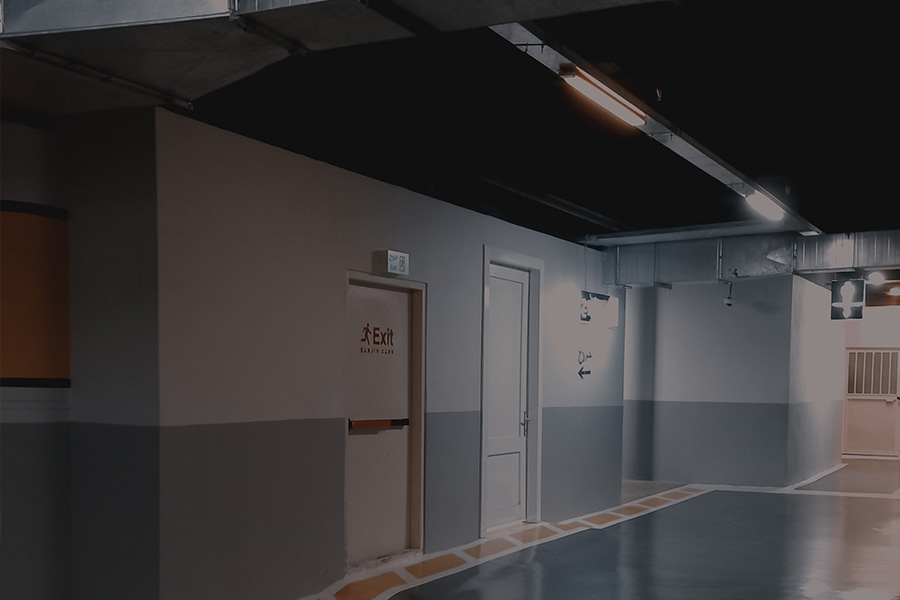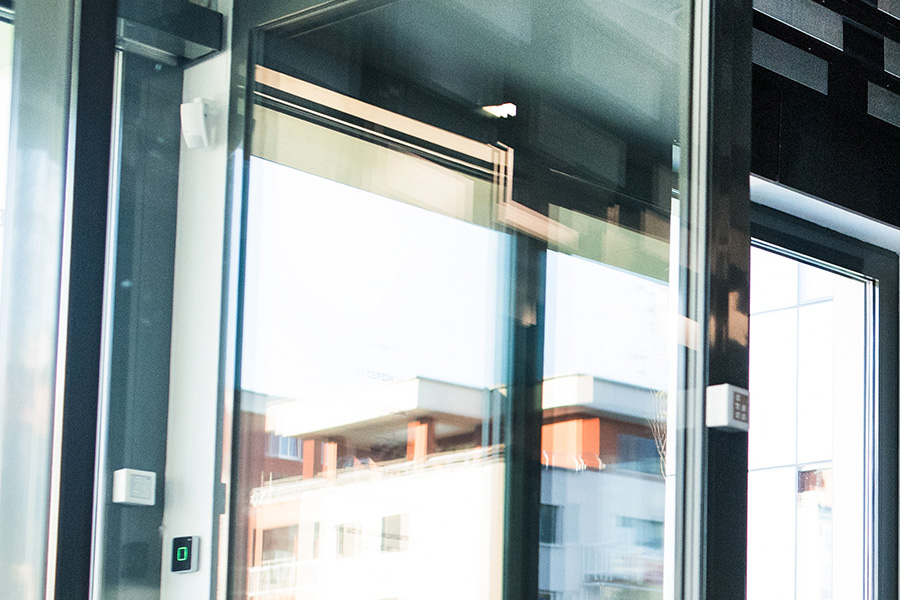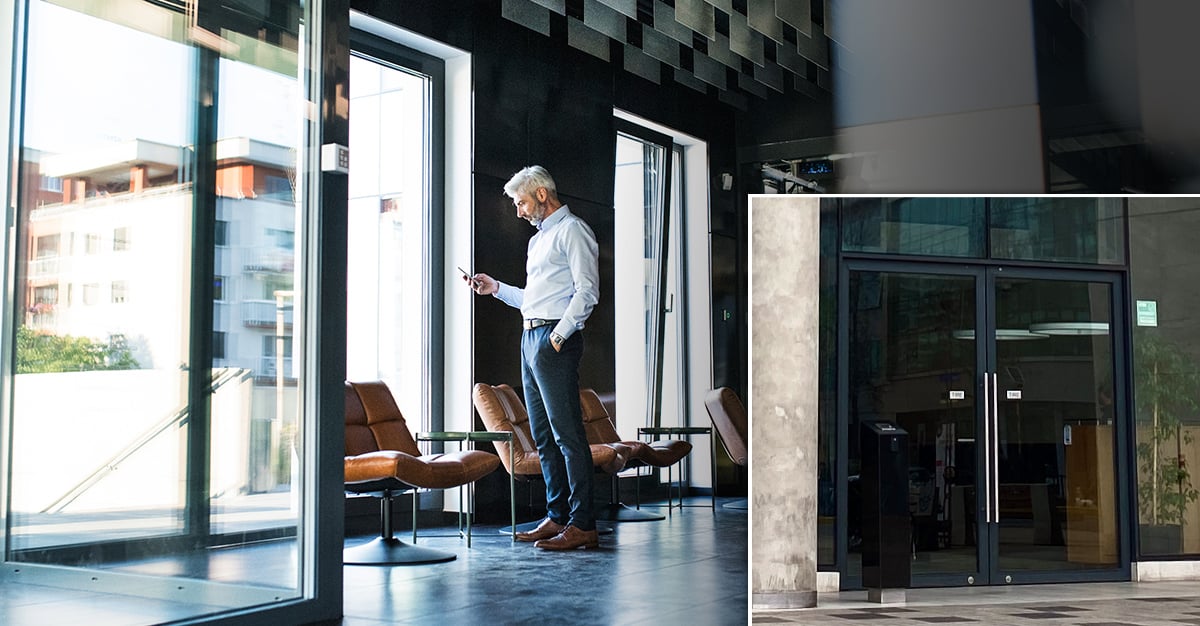Table of Contents
A hydraulic door closer is a device that automatically closes a door after it has been opened, using hydraulic (fluid-based) mechanisms. It’s essential in maintaining security, controlling access, and ensuring safety in various buildings. By managing both the opening and closing speed and force, it reduces the hazards associated with uncontrolled door closures, such as physical injuries and door damage.
Hazards of doors without slowing mechanisms
Doors without slowing mechanisms pose significant risks. They can slam shut abruptly, leading to potential injuries, especially to children and the elderly. Moreover, the impact of a slamming door can damage both the door and the surrounding wall, leading to costly repairs.
Physical injury risks
The most immediate and concerning hazard is the risk of physical injuries. Doors that close abruptly can catch individuals off guard, leading to injuries. This is particularly critical in environments frequented by children, the elderly, or those with mobility challenges. The speed at which these doors close can result in fingers getting caught, leading to bruising, fractures, or more severe injuries. Moreover, individuals who are slower to move, such as the elderly or those with disabilities, might not be able to pass through quickly enough, increasing the risk of being hit by the closing door.
Increased accident likelihood in emergency situations
In emergencies, such as fires or evacuations, the controlled closing of doors is crucial. Doors that slam shut can cause panic, hinder evacuation efforts, and potentially lead to stampedes or injuries as people rush to exit.
Damage to door and infrastructure
Beyond physical harm to individuals, the lack of a door slowing mechanism can lead to structural damage. The force of a door slamming can strain the hinges and locks and also crack frames. It can even result in damage to the surrounding walls. Over time, this can lead to misalignment issues, making doors harder to close and open, and can contribute to increased maintenance costs and the need for premature replacements.
Amplified noise pollution
Doors that close with a bang contribute significantly to noise pollution, especially in settings like offices, hospitals, or residential buildings. This can create a disruptive and stressful environment, affecting concentration, rest, and overall well-being.
Compromised security and privacy
In settings where doors need to remain closed for security or privacy, such as offices, meeting rooms, or medical facilities, doors without a proper closing mechanism may not shut fully. This can lead to breaches in confidentiality or security.
Energy efficiency and environmental control
In buildings where temperature control is essential, such as in conditioned spaces, doors that do not close properly can lead to energy loss. This not only has financial implications but also impacts the building’s environmental footprint.

Door controlling solutions and automatic openers
Different types of door controlling solutions cater to diverse needs:
- Overhead door closers
Common in commercial settings, they offer adjustable closing speeds and control. - Concealed door closers
Installed within the door or frame for aesthetic appeal, suitable for interior doors. - Surface-mounted closers
Versatile and easy to install, ideal for various door types. - Floor-spring closers
Mounted in the floor, they are often used for heavy doors and high-traffic areas. - Electromagnetic door holders
Integrated with fire alarm systems, these hold doors open under normal conditions and release to close in case of a fire.
Working of a hydraulic door closer
Hydraulic door closers operate on a sophisticated yet efficient principle, utilizing fluid mechanics to control the motion of doors. At the heart of this mechanism is the fluid-filled chamber, which plays a pivotal role in managing the door’s movement. To understand how these devices function, it is essential to delve into the key components and the physics behind their operation.
The fluid-filled chamber and valves
The core component of a hydraulic door closer is the chamber filled with a specially formulated hydraulic fluid. This fluid is the medium through which force is transmitted and controlled. When a door is opened, the arm of the door closer exerts pressure on a piston inside this chamber. As the piston moves, it forces the fluid to pass through a series of valves. These valves are precision-engineered to control the flow rate of the fluid, and thus, control the speed at which the door closes.
Adjustable speed control
One of the defining features of hydraulic door closers is the ability to adjust the closing speed. This is achieved through adjustable valves, which can be fine-tuned to regulate the flow of hydraulic fluid. By adjusting these valves, one can alter the resistance against the piston, thereby controlling how quickly or slowly the door closes. This feature is crucial for tailoring the door’s behavior to suit specific environmental needs, like preventing slamming in windy conditions or ensuring a gentle close in quiet settings.
The latching phase
The final phase of the door closing process is known as the latching phase. This phase requires a different speed compared to the initial closing phase. Hydraulic door closers are typically designed with a separate valve to control the latching speed. This ensures that the door closes firmly enough to latch without slamming shut.
Temperature compensation
Variations in ambient temperature can affect the viscosity of hydraulic fluid, potentially altering the door closer’s performance. Advanced hydraulic door closers are equipped with temperature-compensation technology. This feature allows the closer to adjust the fluid flow automatically, ensuring consistent performance regardless of temperature changes.
Backcheck functionality
Many hydraulic door closers also include a ‘backcheck’ feature. This function prevents the door from being opened too rapidly, protecting the door, the closer, and the surrounding wall from damage caused by forceful openings. The backcheck mechanism kicks in when the door is opened past a certain angle, providing resistance to slow down the door’s movement.
Durability and maintenance
Hydraulic door closers are designed for durability. The sealed fluid chamber minimizes the need for maintenance, and the robust construction ensures long-term reliability. However, periodic adjustments and inspections are recommended to maintain optimal performance, especially in high-traffic areas.
Sizing and compatibility
The size and strength of a hydraulic door closer depend on the door’s weight and size. Heavier doors require stronger closers with higher durability ratings. This often means a bigger or longer cylinder. It’s crucial to match the closer’s specifications with the door’s characteristics for optimal performance.

Common applications
These solutions are widely used in:
Commercial buildings
For main entrances and internal doors to manage traffic flow.
Residential settings
Particularly in apartments and communal areas.
Healthcare facilities
To maintain hygiene and control access.
Educational institutions
For safety and noise control in classrooms and corridors.

Recommendations considering safety, cost, and usability
When selecting a hydraulic door closer, consider:
- Safety features
Look for models with adjustable speeds and latching controls. - Cost-effectiveness
Balance initial costs with long-term durability and maintenance needs. - Ease of installation and use
Ensure the closer is compatible with the door type and usage requirements.
Hydraulic door closers offer a blend of safety, control, and convenience, making them an indispensable part of modern building management. They ensure a safer environment while enhancing the functionality and longevity of doors. As technology evolves, so do the options for door control, making it imperative to stay informed and choose solutions that align with specific needs and regulations.
If you are interested in a wide variety of door closers, door openers and door automation solutions we highly recommend paying a visit to the Swedish supplier Dictator Scandinavia. Click on this link for more information: https://dictator.se/dorrstopp-ytterdorr/





